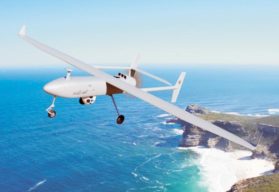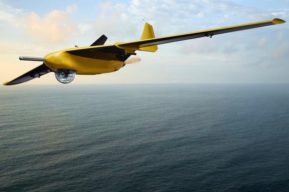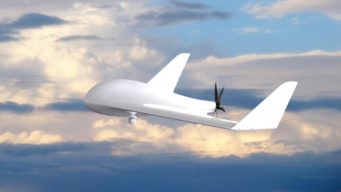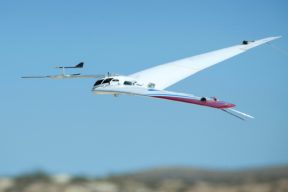Unmanned aerial vehicle (UAV)
Unmanned aerial vehicle (UAV)
Unmanned aerial vehicle has technical capability for the transfer between aircraft and helicopter (tricopter) modes due to an independent change of the direction of the thrust vector of the motor groups. It is possible to change the sweep of wing consoles with motor groups to ensure accurate adjustment to the current balancing of the apparatus for the replaceable payload. Mentioned above capabilities allow the implementation of complex flight modes. This manoeuvre is possible only if there is a variable thrust vector of the motor groups.
The unmanned aerial vehicle for communication and observation purposes uses unique natural features of the atmosphere – the presence of winds of constant direction at certain altitudes anywhere in the world. Due to this natural phenomenon, the device is suspended in the air stream at a high altitude by the principle of an air kite and is held there without fuel costs due to the energy generated by the wind power generator. The device can solve a number of tasks at once starting with observational functions of monitoring the situation and ending with broadband radio communication and retransmission.
Communication UAV allows you to stay at a given point above the surface of a certain area for an unlimited amount of time without fuel consumption.




